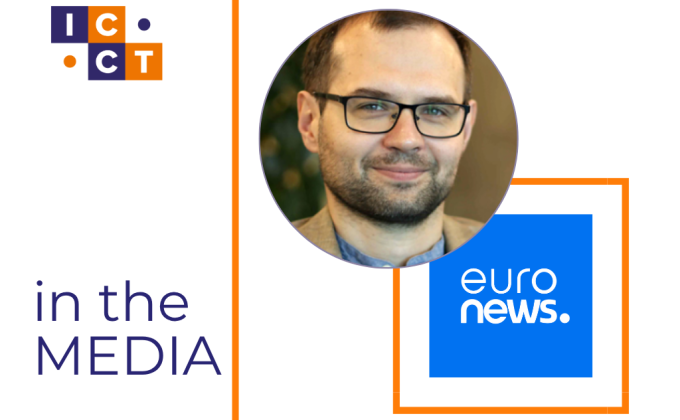August 3 marks the tenth anniversary of the genocide committed by ISIS against the Yazidis in Iraq. Despite it being ten years on, over 150,000 survivors continue to live in displaced person camps in north-eastern Iraq, even as the Iraqi government seeks to close down the camps and force the Yazidi survivors home so as to normalise governance in the region. However, returning to their homes in the Sinjar region, where insecurity and ISIS remain active, risks a repetition of violence against Yazidi communities. The Iraqi government has been proactive in offering reparations to Yazidi survivors and other minorities, but paying monthly compensation is proving not enough to encourage people to reintegrate back into their homes and lives before ISIS.
Focusing on one aspect of the implications of this genocide, this analysis examines the 2021 Yazidi [Female] Survivor Law (YSL) and the extent to which it can remedy the harm suffered by minority groups at the hands of ISIS. It draws from ongoing research on the implementation of the YSL on behalf of the International Organisation for Migration (IOM) and recent fieldwork in Iraq.i In May 2024, the author interviewed a number of government officials, survivors, and civil society actors in Iraq on the implementation of YSL. There is no strict international standard to measure the success of reparations. The 2005 UN Basic Principles on the Right to a Remedy and Reparations established that States and other responsible organisations should make reparations for gross violations of human rights and serious breaches of international humanitarian law, such as sexual enslavement and forced conscription of children. However, beyond reparations needing to be ‘adequate, effective and prompt’ as per the UN Principles and to include restitution, compensation, rehabilitation, satisfaction and guarantees of non-repetition, there is no specific guidance as to how they should be delivered. We have tried to tease out more specific implementation under the Belfast Guidelines on Reparations. In discussing the YSL, a background is first provided, followed by an in-depth assessment of the implementation of the YSL.
The Yazidi Genocide and their Status Today
Before dawn on the 3rd of August 2014, hundreds of ISIS fighters attacked the mountainous Sinjar region in north-western Iraq. Their target was the Yazidi community, a religious group indigenous to the region, which ISIS deemed as blasphemous and aimed to wipe out. Tens of thousands of Yazidi civilians were forced to flee from their homes with little warning and few supplies, resulting in hundreds dying of dehydration and exposure on Mount Sinjar. Those who were captured by ISIS were separated into groups, with Yazidi men being executed in large numbers in front of their families. Hundreds of elderly women and children were killed, including some who were buried alive. The remaining women and children were enslaved and transported to Syria to be sold as sex slaves and were sexually exploited by ISIS fighters. Members of other minority groups, such as the Shabak, Turkmen and Christians, were also abducted and killed by ISIS members. Young boys who were captured were forcibly conscripted to fight for ISIS, leaving many killed or injured.
Ten years after the genocide, over 150,000 Yazidis still live in tents in internally displaced persons (IDP) camps in Iraqi Kurdistan. The Iraqi government earlier said they wanted to see these camps closed down by the end of July 2024 (this has not yet occurred) and for the Yazidis to return to their homes near Sinjar to encourage normalisation of the region. This reflects regional tensions within Iraq, where the central government wants to see the end to the large number of IDPs within the jurisdiction of the Kurdistan Regional Government and the transfer of their control to Sinjar, alongside other disputes between the two government actors over budget and revenue from oil and gas reserves. Yet the mass destruction of Sinjar and Yazidi villages has left those displaced to return to only ruins and risks of unexploded bombs. The Iraqi government has offered 4 million Iraqi dinars (approx. £2,400) to each displaced household to return and rebuild their homes. However, the cost of rebuilding a home is likely to be five to six times this amount, further exacerbated by the lack of basic infrastructure such as potable water, electricity, schools, and health facilities. A more pressing concern for Yazidi survivors is the fear of repeated violence if they return to the Sinjar region, where a number of armed groups, including ISIS, still operate.
In 2018, one of the Yazidi survivors, Nadia Murad, who was sexually enslaved and whose mother and six brothers were killed by ISIS, was awarded the Nobel Peace Prize for her advocacy in highlighting the plight of sexual violence used by ISIS against the Yazidis. Despite this international attention, some Yazidis still remain in displaced person camps in Syria, such as al-Hol camp, which holds thousands of children from ISIS-affiliated families, some of whom were abducted and other children of fighters. One woman was rescued in February 2024 after being held by ISIS for nearly ten years. Former UN Special Rapporteur Fionnuala Ní Aoláin has found that the continued arbitrary detention of children (who make up sixty percent of the 52,000 population of al-Hol camp) to be a ‘clear violation of international human rights law and incompatible with the rights of the child’. In 2019, the Yazidi Supreme Spiritual Council declared that they would welcome abducted women, but not children born from ISIS fathers. This stands in contrast to their previous decision to accept children born out of rape, which faced outcry from the Yazidi community. This left Yazidi women to choose between their own freedom by returning to Iraq, leaving their children behind in al-Hol camp, or returning with them and facing stigmatisation and communal isolation. Moreover, Yazidi boys who were abducted and forced to fight for ISIS continue to face hardship. While some of these former child soldiers receive benefits under the Yazidi Survivors Law (YSL), many of them suffer from combat-related injuries and face barriers to joining their families who have moved abroad. There is some frustration that the plight of male survivors has not received more attention to better address their complex needs.
The Yazidi [Female] Survivor Law
In 2021, the Iraqi Parliament passed the Yazidi [Female] Survivor Law (YSL), which recognises the crimes committed against the Yazidi, Shabak, Christian, and Turkmen communities by ISIS as genocide and crimes against humanity. The YSL aims to provide a range of benefits to victims of sexual violence, sexual slavery, and forced pregnancy, as well as children who were kidnapped, and those who survived massacres. Iraq’s General Directorate for Survivor Affairs is responsible for the delivery of measures under the YSL with a Committee to adjudicate on claims. The law emerged out of the coalition of local and international civil society groups advocating for redress for Yazidi survivors, with organisations like the International Organisation Migration taking a strong capacity-building role, drawing from its past experience in reparation programmes for the Holocaust, Sri Lanka, and Sierra Leone. The law is ground-breaking for being the first law in a Muslim-majority country to redress sexual violence, as well as to implement a reparation programme within a few years since the defeat of ISIS.
Benefits under the YSL
There are a number of measures under the YSL for survivors including a monthly payment, access to land, employment opportunities, and rehabilitation efforts. So far, out of 2,235 applicants, over 1,700 survivors have been deemed eligible and are currently receiving around six hundred dollars (US) per month as compensation. One survivor, ‘Sarah’, told the author that receiving this amount each month has enabled her to become more independent and to move out of the camp to rented accommodation. Another survivor, ‘Khaled’, found the money helpful, but found the application process cumbersome. He is planning to resettle in Australia with the remaining survivors of his family, as the money alone “doesn’t allow us to live peacefully” in Iraq.
The YSL also provides for eligible survivors to be granted a residential plot of land with a real estate loan or a free housing unit. On the 29th of May 2024, the Directorate distributed the first 250 plots to Yazidi survivors in Sinjar and a further 12 to Turkmen survivors in Tel-Afar. While this is a significant step forward, without adequate security protection and significant investment in the rebuilding of public services and infrastructure in these areas, it is insufficient. Allowing the return of those displaced is only one part of reconstructing Iraq after ISIS - continued political infighting between the central and regional governments, as well as local militias, over security and governance, is preventing wider agreement on the return of those displaced and the rebuilding of Sinjar.
The Iraqi government has also committed to establishing a mental health and psycho-social support rehabilitation centre in Sinjar as stipulated under the YSL, after learning from experiences in Jordan and DRC. Given the lack of infrastructure and ongoing insecurity, it is likely to be difficult to retain staff to meet survivors’ needs or to treat them from Sinjar when they remain in IDP camps three to four hours away by car in Iraqi Kurdistan. For Turkmen, Shabak, and Christian survivors who do not live near Sinjar, this measure is not beneficial. Some local civil society organisations interviewed by the author expressed the view that the Iraqi government should ‘absorb’ or ‘institutionalise us’ in the delivery of support to survivors in the community, such as mental health rehabilitation. Some groups already provide referral pathways to survivors for short-term psychological support, but allowing local organisations to be service providers could fill a significant healthcare gap while providing specialised support to survivors.
The YSL also provides for education to survivors, allowing them to continue their education from the point they left school. However, for several survivors who are in their twenties and do not want to learn beside young children, specific staff training, and adult education programs are required. Rehabilitation should be tailored to victims’ and survivors’ needs, with bespoke measures allowing them to obtain school accreditation with teaching staff who are trauma-informed and trained in dealing with victims.
The YSL also provides for more public-facing reparations to officially acknowledge victims suffering (a ‘measure of satisfaction’) through public commemoration on the 3rd of August for the crimes committed against the Yazidis and other ethnicities by ISIS. Such commemoration for the tenth anniversary will centre around the Yazidi Genocide Memorial in Sinjar, which was created and funded by victim organisations and international donors last year. Some survivors interviewed by the author expressed the view that the 3rd of August should not only be commemorated but made into a national holiday to “show we have value in this country” and to raise awareness around what occurred. Public commemoration would be important for countering hate speech against minorities. A formal apology by the Iraqi government would also be appropriate, given that the Iraqi government and Kurdish forces abandoned Yazidis and other minorities to their fate with ISIS. Other efforts stipulated under the YSL, such as recovery of remains, have not yet been fully delivered. There are over 190 mass graves, of which only sixty have been exhumed, preventing closure for their families. In addition, for those still missing or remaining in the Al-Hol camp in Syria, their return is not just the responsibility of Iraq, but of all governments who have nationals detained there.
Challenges of the Implementation of the YSL
There remain substantial challenges to remedy the harm caused by ISIS. Soon after the YSL was passed, new rules were introduced that imposed a heavy evidential burden on survivors to bring their claim through ‘investigative papers’ to commence a criminal investigation in the courts. This had a disproportionate impact on many survivors. Some who had suffered sexual violence had to speak of their suffering in front of police officers and court staff without any training or support. Shabak survivors have faced additional hurdles, such as the intelligence services having to provide a letter to support their claim that none of their family is ISIS-affiliated, and a lack of translators to document their violations. For many survivors who live outside of Iraq, it has been financially and psychologically difficult to make a claim in person by returning to a court local to the place where they suffered their violations. For some survivors, it has cost them a substantial amount of money and time (some nearly two years) to bring a claim before the Directorate and Committee. The YSL also does not allow survivors to claim for the deaths of Yazidi and other minorities who were killed during the war against ISIS, including coalition airstrikes that killed those who were captured. Survivors can make separate claims for these violations under Law No. 20 of 2009, but the evidence collected for the YSL claim cannot be transferred across to this other compensation scheme.
The YSL, in addition, provides for the investigation and prosecution of ISIS’ crimes against minority groups. There have been more than twenty thousand prosecutions against ISIS members in Iraq, including the imposition of the death penalty in a number of cases. June 2024 marked the first time that a member of ISIS was convicted for committing genocide against the Yazidis and sentenced to death using the YSL. Recently, a death sentence was given to the wife of former ISIS leader al-Baghdadi for keeping a Yazidi woman as a sex slave in their home. Yet, as the Coalition for Just Reparations points out, the YSL is only used in sentencing, not in prosecuting international crimes more generally, which requires specific legislation to bring charges and trials for international crimes into Iraqi criminal law. There have been other trials in Germany against former ISIS members for genocide, crimes against humanity, and war crimes against the Yazidis. However, despite tens of thousands of former ISIS members being prosecuted, and over 8,000 given death sentences as punishment for terrorism offences, such convictions have not been based on international crimes against the Yazidis and other minorities. The UN Assistance Mission to Iraq warned in 2020 that overuse of the Anti-Terrorism Law and its ambiguous scope for the death penalty risks unsafe convictions by being based on confessions obtained under torture, which can create new grievances, and undermine social cohesion.
Despite this range of measures, tens of thousands of victims will not ultimately benefit under the YSL. They could make claims under the separate Law No. 20 of 2009, but over 8,300 approved claims under the scheme have not been paid. While Iraq does have a compensation law for losses during military operations that covers coalition airstrikes, the process is slow and burdensome. Western Coalition forces who killed and injured Iraqis in the fight against ISIS have not made any substantive reparations to those affected, only ad hoc cash payments to some. In many ways, the war against ISIS has affected millions of Iraqis and Syrians, as well as those further afield, most of whom have their harm unaddressed under existing laws. The YSL prioritises Yazidis and minority groups affected by the genocide and crimes against humanity, given their vulnerability and the gravity of the violations. However, prioritising some victims over others risks creating a hierarchy of victimhood that can feed grievances and animosity in other victimised groups. Comprehensive reparations are not just about measures to remedy harm but must ensure that all those affected receive redress as a right.
Conclusion
A decade after ISIS’ offensive in northern Iraq became a genocide and crimes against humanity against the Yazidi, Christians, Turkmen, and Shabak were committed, survivors still struggle to live a dignified existence. Beyond that YSL, the Iraqi government has made significant strides to redress the harm suffered by these groups. There are lessons for other countries to learn from Iraq, which has a number of reparation programmes in operation (Martyrs’ Foundation Law No. 3 (2006), Law No. 20 on Compensation for Military Operations (2009), Law on Martyrs (2019 - Speicher Massacre)), as well as the recently completed UN Claims Commission for the invasion in Kuwait. Yet, there remains a long way to go. Providing individual measures, such as compensation, is only a small part of remedying survivors’ and victims’ harm. Compensation alone cannot remedy genocide: it is only a plaster on a gaping wound, risking its recurrence in the future. A more comprehensive approach requires tackling the ongoing insecurity and drivers that led to such violence, as well as investing in substantive infrastructure in Sinjar and other affected localities to allow those displaced to return home.
This article represents the views of the author(s) solely. ICCT is an independent foundation, and takes no institutional positions on matters of policy unless clearly stated otherwise.
Photocredit: Owen_Holdaway/Shutterstock





